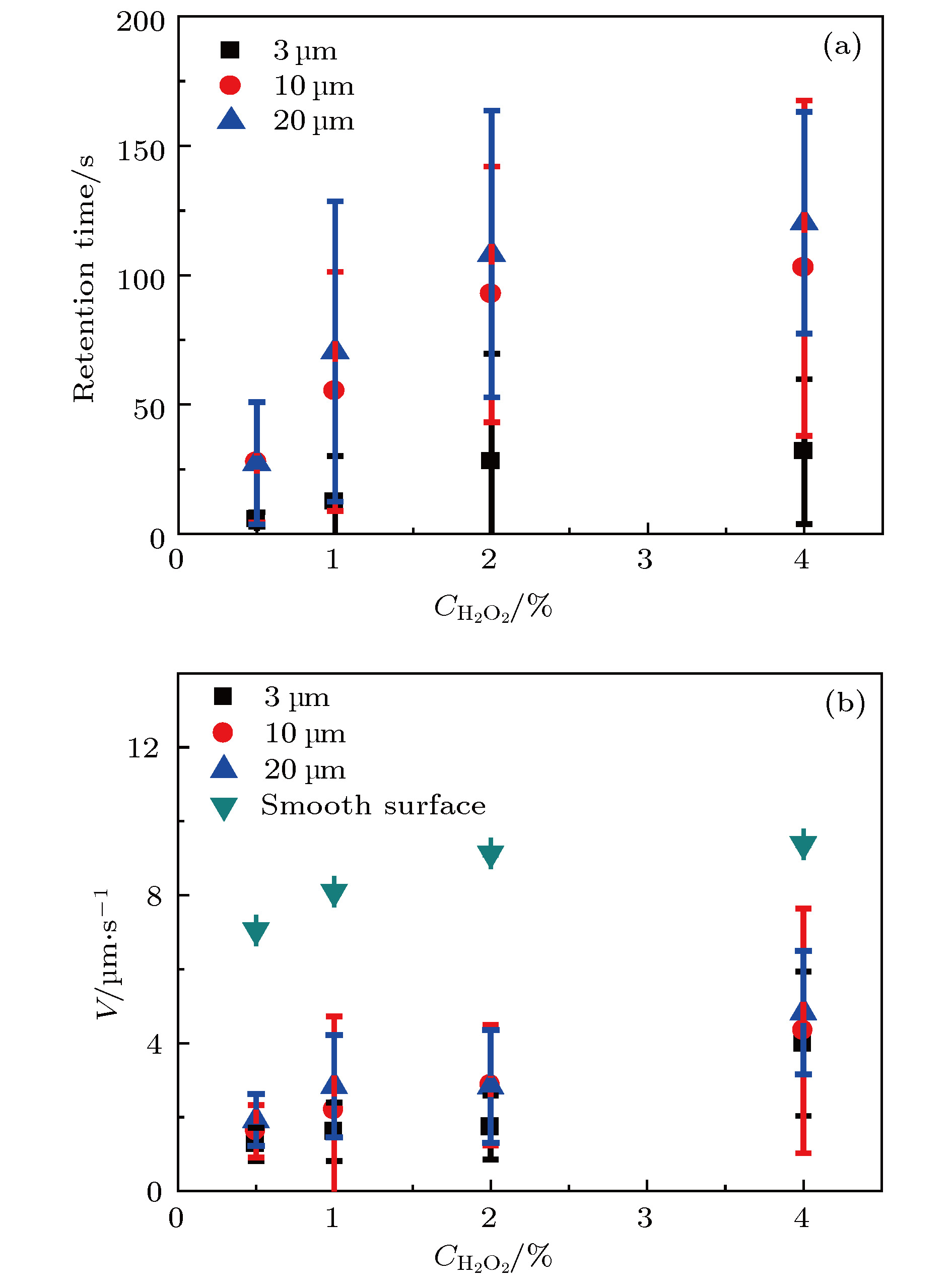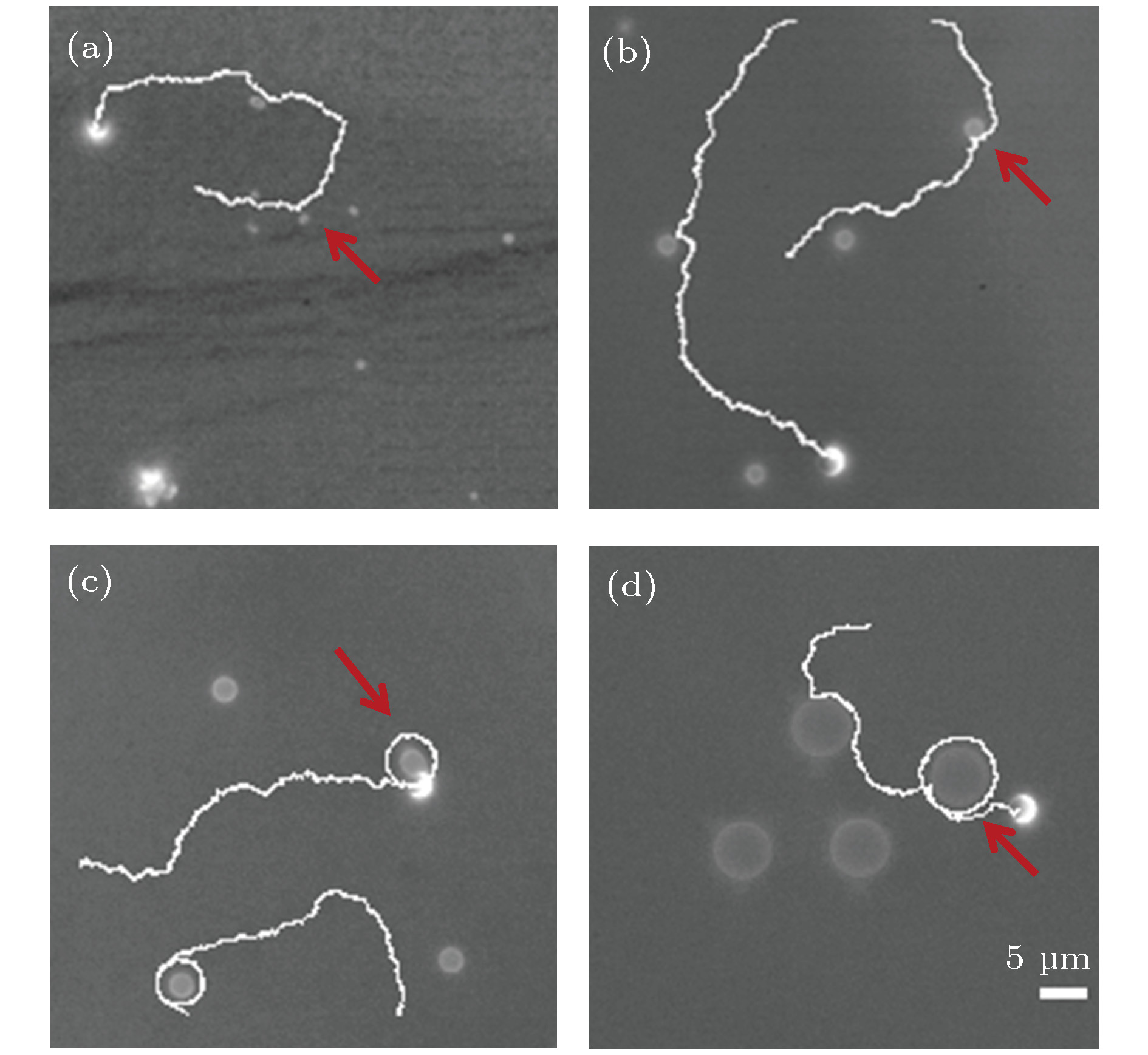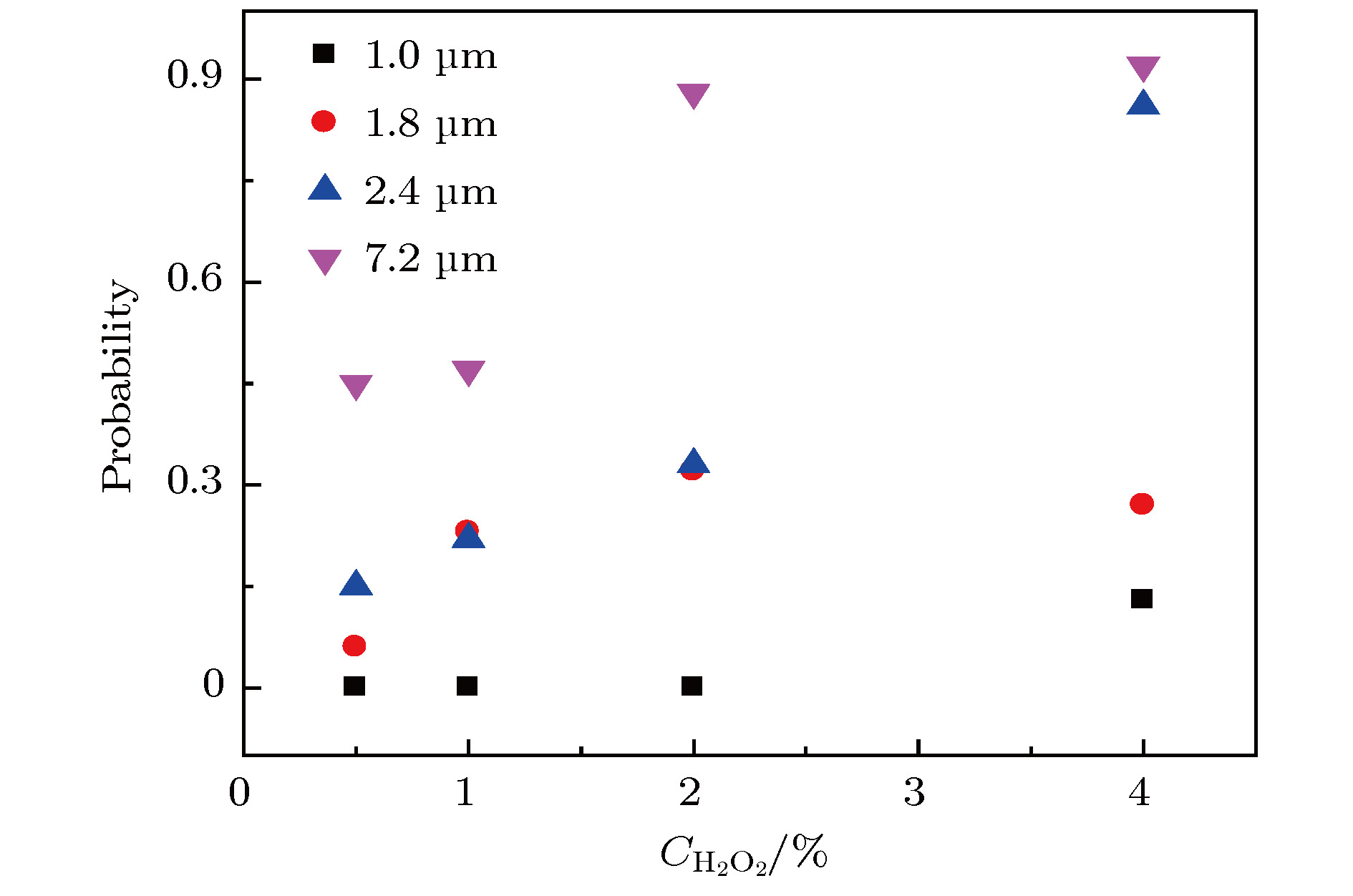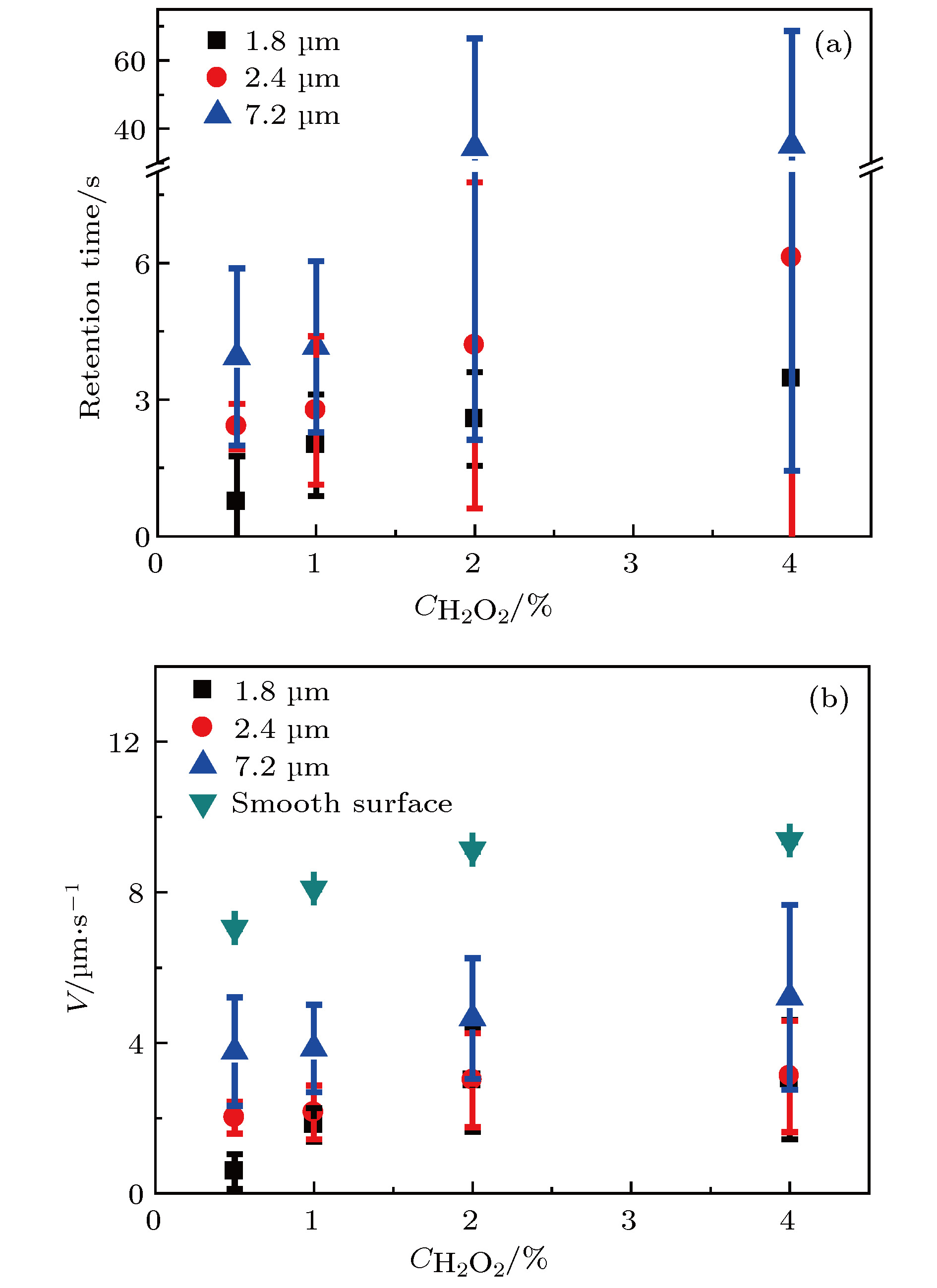-
自驱动粒子在靠近边界尤其是平面上障碍物的边界时, 会展现出奇特的运动行为. 本文通过实验研究了固定于平面上的微米级障碍物的几何效应(包括大小和形状)对双氧水驱动的Janus微球运动行为的影响. 实验结果表明, 当障碍物尺寸超过临界值后, 自驱动的Janus微球会被其“捕获”并沿着其边界定向运动. 自驱动粒子在障碍物边界的停留时间及运动速率随着双氧水浓度的增加而增大, 且其在圆柱形障碍物边界和球形障碍物边界的停留时间及运动速率均随着障碍物直径的增加而增大. 但在相同的双氧水浓度和障碍物直径条件下, 自驱动粒子在圆柱边界上的停留时间比其在球形障碍物边界上长; 在圆柱边界上的运动速率比在球形障碍物边界上小, 揭示了自驱动粒子在障碍物边界上的运动行为与障碍物的几何特性密切相关. 本研究有助于进一步理解自驱动粒子在不同大小及形状的障碍物中的运动特征, 掌握并利用这些特征在诸如设计特殊几何形状来引导自驱动粒子的运动等领域有很好的应用价值.Self-propelled particles exhibit interesting behavior when approaching boundaries or obstacles, which has been drawn a lot of attention due to its potential applications in areas of cargo delivery, sensing and environmental remediation. However, our understanding on the mechanism of how they interact with boundaries or obstacles is still limited. Here, using video particle-tracking microscopy, we experimentally studied the dynamics of self-propelled Janus microsphere driven by H2O2 near obstacles. The Janus particles used are sulfuric polystyrene (PS) microspheres (hydrodynamic diameter is 3.2 μm) with only half surface being sputter-coated with a five-micron-thick platinum layer. Two different types of obstacles are used. One is cylindrical post and the other is PS microsphere. To understand the size effect of obstacles, cylindrical posts with three different diameters (3 μm, 10 μm and 20 μm), and PS microspheres with four different diameters (1.0 μm, 1.8 μm, 2.4 μm and 7.2 μm) are tested, respectively. The results show that when obstacles are larger than a critical size, the self-propelled Janus microspheres will be captured and orbit around them. The retention time and the orbiting speed of the Janus particles increase with the concentration of H2O2, as well as with the diameter of obstacles no matter whether cylindrical posts or PS microspheres are used as obstacles. However, we found that under the same concentration of H2O2, compared with the case of PS microspheres as obstacles, when Janus particles orbit around cylindrical posts, the retention time is larger and the average speed is smaller. These results indicate that the self-propelled behavior of Janus particles near obstacles is closely dependent on the geometrical properties of obstacles. Our results of Janus spheres are different from earlier work on Au-Pt Janus rods [Takagi D, Palacci J, Braunschweig A B, Shelley M J, Zhang J 2014 Soft Matter 10 1784]. By comparing the speed of Janus particles before and after they are captured by spherical obstacles, for our case, the speed of Janus spheres is reduced, while for the case of Au-Pt rods, the speed of Au-Pt rods doesn’t change much. Such discrepancies may originate from different driven mechanisms in these two systems (electropheoresis mechanism for Au-Pt micro-rods and diffusiophoresis mechanism for PS-Pt Janus microspheres), which are then resulted in different flow fields and different distributions of catalytic solutions. But to test this hypothesis, further work is needed. Our study provides us a better understanding on the dynamic behavior of self-propelled particles near obstacles, which will be helpful for applications in, for example, designing micro-structures to guide the motion of self-propelled particles.
-
Keywords:
- self-propelled /
- Janus microsphere /
- confinement /
- obstacles
[1] Howse J R, Jones R A L, Ryan A J, Gough T, Vafabakhsh R, Golestanian R 2007 Phys. Rev. Lett. 99 048102
 Google Scholar
Google Scholar
[2] Paxton W F, Kistler K C, Olmeda C C, Sen A, St Angelo S K, Cao Y Y, Mallouk T E, Lammert P E, Crespi V H 2004 J. Am. Chem. Soc. 126 13424
 Google Scholar
Google Scholar
[3] Fournier-Bidoz S, Arsenault A C, Manners I, Ozin G A 2005 Chem. Commun. 4 441
[4] Jiang H R, Yoshinaga N, Sano M 2010 Phys. Rev. Lett. 105 268302
 Google Scholar
Google Scholar
[5] Palacci J, Sacanna S, Steinberg A P, Pine D J, Chaikin P M 2013 Science 339 936
 Google Scholar
Google Scholar
[6] Bricard A, Caussin J B, Desreumaux N, Dauchot O, Bartolo D 2013 Nature 503 95
 Google Scholar
Google Scholar
[7] Ebbens S, Gregory D A, Dunderdale G, Howse J R, Ibrahim Y, Liverpool T B, Golestanian R 2014 Epl-Europhys. Lett. 106 58003
 Google Scholar
Google Scholar
[8] Martinez-Pedrero F, Massana-Cid H, Tierno P 2017 Small 13 1603449
 Google Scholar
Google Scholar
[9] Kagan D, Laocharoensuk R, Zimmerman M, Clawson C, Balasubramanian S, Kong D, Bishop D, Sattayasamitsathit S, Zhang L F, Wang J 2010 Small 6 2741
 Google Scholar
Google Scholar
[10] Soler L, Magdanz V, Fomin V M, Sanchez S, Schmidt O G 2013 ACS Nano 7 9611
 Google Scholar
Google Scholar
[11] Zhang Z J, Zhao A D, Wang F M, Ren J S, Qu X G 2016 Chem. Commun. 52 5550
 Google Scholar
Google Scholar
[12] Zhou D K, Li Y C G, Xu P T, Ren L Q, Zhang G Y, Mallouk T E, Li L Q 2017 Nanoscale 9 11434
 Google Scholar
Google Scholar
[13] Lozano C, ten Hagen B, Lowen H, Bechinger C 2016 Nat. Commun. 7 12828
 Google Scholar
Google Scholar
[14] Dey K K, Bhandari S, Bandyopadhyay D, Basu S, Chattopadhyay A 2013 Small 9 1916
 Google Scholar
Google Scholar
[15] Takagi D, Palacci J, Braunschweig A B, Shelley M J, Zhang J 2014 Soft Matter 10 1784
 Google Scholar
Google Scholar
[16] Das S, Garg A, Campbell A I, Howse J, Sen A, Velegol D, Golestanian R, Ebbens S J 2015 Nat. Commun. 6 8999
 Google Scholar
Google Scholar
[17] Simmchen J, Katuri J, Uspal W E, Popescu M N, Tasinkevych M, Sanchez S 2016 Nat. Commun. 7 10598
 Google Scholar
Google Scholar
[18] Wykes M S D, Zhong X, Tong J, Adachi T, Liu Y P, Ristroph L, Ward M D, Shelley M J, Zhang J 2017 Soft Matter 13 4681
 Google Scholar
Google Scholar
[19] Katuri J, Caballero D, Voituriez R, Samitier J, Sanchez S 2018 ACS Nano 12 7282
 Google Scholar
Google Scholar
[20] Zong Y W, Liu J, Liu R, Guo H L, Yang M C, Li Z Y, Chen K 2015 ACS Nano 9 10844
 Google Scholar
Google Scholar
[21] Yu H L, Kopach A, Misko V R, Vasylenko A A, Makarov D, Marchesoni F, Nori F, Baraban L, Cuniberti G 2016 Small 12 5882
 Google Scholar
Google Scholar
[22] Spagnolie S E, Moreno-Flores G R, Bartolo D, Lauga E 2015 Soft Matter 11 3396
 Google Scholar
Google Scholar
-
图 3 自驱动的Janus微球在不同双氧水浓度的条件下, 绕不同直径的圆柱公转的(a)停留时间及(b)运动速率
Fig. 3. (a) The retention time and (b) average speed of self-propelled Janus spheres when they are orbiting around cylindrical posts with different diameter at different concentrations of H2O2. The results are obtained by averaging over 30−50 trajectories, and the error bars stand for standard errors.
图 4 自驱动的Janus微球在具有PS球(圆形暗斑, 如红色箭头所示)作为障碍物的盖玻片上运动的轨迹举例, PS球的粒径分别为(a) 1 μm, (b) 1.8 μm, (c) 2.4 μm, (d) 7.2 μm
Fig. 4. Examples of trajectories of Janus particles when polystyrene spheres (as indicated by red arrow) are used as obstacles. Diameters of used polystyrene spheres are (a) 1 μm, (b) 1.8 μm, (c) 2.4 μm, (d) 7.2 μm.
图 6 自驱动的Janus微球在不同双氧水浓度的条件下, 在不同粒径的PS微球边缘的(a)停留时间及(b)运动速率
Fig. 6. (a) The retention time and (b) average speed of self-propelled Janus microspheres on polystyrene microspheres with different diameter as a function of the concentration of H2O2. The results are obtained by averaging over 30−50 trajectories, and the error bars stand for standard errors.
-
[1] Howse J R, Jones R A L, Ryan A J, Gough T, Vafabakhsh R, Golestanian R 2007 Phys. Rev. Lett. 99 048102
 Google Scholar
Google Scholar
[2] Paxton W F, Kistler K C, Olmeda C C, Sen A, St Angelo S K, Cao Y Y, Mallouk T E, Lammert P E, Crespi V H 2004 J. Am. Chem. Soc. 126 13424
 Google Scholar
Google Scholar
[3] Fournier-Bidoz S, Arsenault A C, Manners I, Ozin G A 2005 Chem. Commun. 4 441
[4] Jiang H R, Yoshinaga N, Sano M 2010 Phys. Rev. Lett. 105 268302
 Google Scholar
Google Scholar
[5] Palacci J, Sacanna S, Steinberg A P, Pine D J, Chaikin P M 2013 Science 339 936
 Google Scholar
Google Scholar
[6] Bricard A, Caussin J B, Desreumaux N, Dauchot O, Bartolo D 2013 Nature 503 95
 Google Scholar
Google Scholar
[7] Ebbens S, Gregory D A, Dunderdale G, Howse J R, Ibrahim Y, Liverpool T B, Golestanian R 2014 Epl-Europhys. Lett. 106 58003
 Google Scholar
Google Scholar
[8] Martinez-Pedrero F, Massana-Cid H, Tierno P 2017 Small 13 1603449
 Google Scholar
Google Scholar
[9] Kagan D, Laocharoensuk R, Zimmerman M, Clawson C, Balasubramanian S, Kong D, Bishop D, Sattayasamitsathit S, Zhang L F, Wang J 2010 Small 6 2741
 Google Scholar
Google Scholar
[10] Soler L, Magdanz V, Fomin V M, Sanchez S, Schmidt O G 2013 ACS Nano 7 9611
 Google Scholar
Google Scholar
[11] Zhang Z J, Zhao A D, Wang F M, Ren J S, Qu X G 2016 Chem. Commun. 52 5550
 Google Scholar
Google Scholar
[12] Zhou D K, Li Y C G, Xu P T, Ren L Q, Zhang G Y, Mallouk T E, Li L Q 2017 Nanoscale 9 11434
 Google Scholar
Google Scholar
[13] Lozano C, ten Hagen B, Lowen H, Bechinger C 2016 Nat. Commun. 7 12828
 Google Scholar
Google Scholar
[14] Dey K K, Bhandari S, Bandyopadhyay D, Basu S, Chattopadhyay A 2013 Small 9 1916
 Google Scholar
Google Scholar
[15] Takagi D, Palacci J, Braunschweig A B, Shelley M J, Zhang J 2014 Soft Matter 10 1784
 Google Scholar
Google Scholar
[16] Das S, Garg A, Campbell A I, Howse J, Sen A, Velegol D, Golestanian R, Ebbens S J 2015 Nat. Commun. 6 8999
 Google Scholar
Google Scholar
[17] Simmchen J, Katuri J, Uspal W E, Popescu M N, Tasinkevych M, Sanchez S 2016 Nat. Commun. 7 10598
 Google Scholar
Google Scholar
[18] Wykes M S D, Zhong X, Tong J, Adachi T, Liu Y P, Ristroph L, Ward M D, Shelley M J, Zhang J 2017 Soft Matter 13 4681
 Google Scholar
Google Scholar
[19] Katuri J, Caballero D, Voituriez R, Samitier J, Sanchez S 2018 ACS Nano 12 7282
 Google Scholar
Google Scholar
[20] Zong Y W, Liu J, Liu R, Guo H L, Yang M C, Li Z Y, Chen K 2015 ACS Nano 9 10844
 Google Scholar
Google Scholar
[21] Yu H L, Kopach A, Misko V R, Vasylenko A A, Makarov D, Marchesoni F, Nori F, Baraban L, Cuniberti G 2016 Small 12 5882
 Google Scholar
Google Scholar
[22] Spagnolie S E, Moreno-Flores G R, Bartolo D, Lauga E 2015 Soft Matter 11 3396
 Google Scholar
Google Scholar
计量
- 文章访问数: 14513
- PDF下载量: 131
- 被引次数: 0













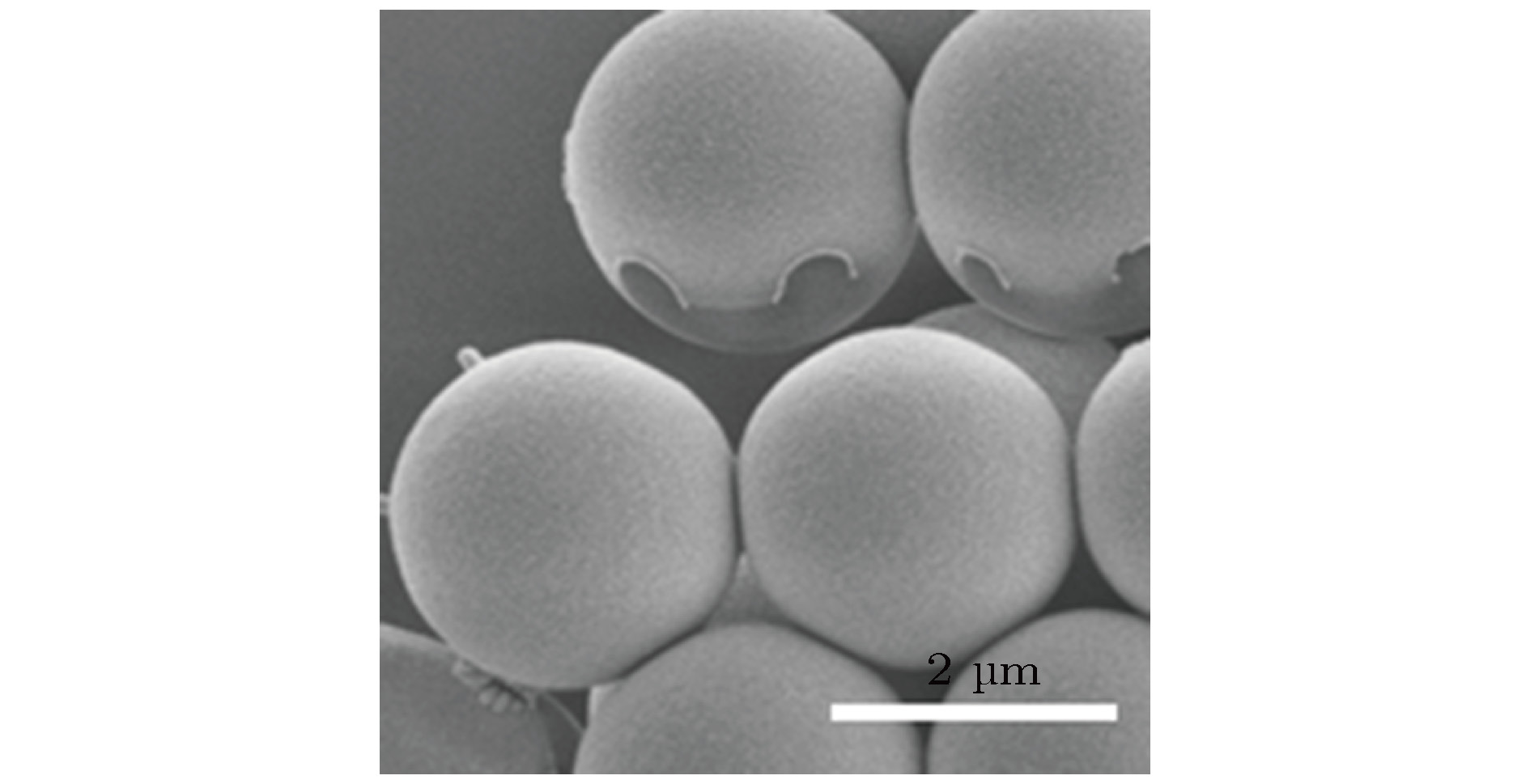
 下载:
下载:

